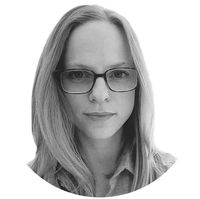5 amazing things we can grow in labs
Diamonds! Burgers! Kidneys!


1. Burgers
In 2013, the world got its first taste of the in-vitro burger — a slab of beef that never actually belonged to a living animal, but was instead created in the lab from cow muscle tissue. It wasn't particularly tasty, and at $330,000, it certainly wasn't affordable, but it was a step toward a more sustainable future. The meat industry accounts for nearly 20 percent of our total greenhouse gas emissions. Plus, animals raised for food take up a ridiculous amount of our land. As Maddie Stone at Gizmodo explains, "Livestock in the U.S. consume more than seven times as much grain as the American population — enough grain to feed about 840 million people." In the three years since test-tube meat made its debut, it's hard to tell if the world has warmed to the idea, but the price has dropped dramatically to a ridiculously cheap $11 per burger. It won't be commercially viable for years, and in the meantime, a handful of other materials are being created in lab settings, which could have huge environmental and health ramifications.
2. Coral
The Week
Escape your echo chamber. Get the facts behind the news, plus analysis from multiple perspectives.

Sign up for The Week's Free Newsletters
From our morning news briefing to a weekly Good News Newsletter, get the best of The Week delivered directly to your inbox.
From our morning news briefing to a weekly Good News Newsletter, get the best of The Week delivered directly to your inbox.
In the Caribbean, elkhorn coral is critically endangered thanks to disease, bleaching, ship damage, and variations in ocean temperature and salinity due to climate change. "Ocean coral is a lot like humans in at least one respect," quips Darryl Fears at The Washington Post. "Stress kills its sex drive, causing fertility rates to nosedive, and with it the production of coral."
In areas where measurements have been made, researchers estimate that 80 percent of the coral has been destroyed. This is a huge problem for biodiversity, since coral reefs provide a habitat for 25 percent of all marine species, including fish that feed more than 500 million people across the globe. According to researchers, their economic value is estimated at $375 billion per year, but if things continue as they are, some researchers estimate they could be gone by 2050, which is what makes a new in-vitro experiment so important.
For the first time, a threatened Caribbean coral species has been successfully raised in a lab setting to sexual maturity. To make this happen, researchers from Germany, the Netherlands, and Curaçao had to capture the coral's "egg-sperm bundles" in the wild and bring them back to the lab. This isn't particularly easy: Elkhorn coral only reproduce once a year, in August, after the full moon, so it required some keen timing on behalf of the researchers. After the gametes were collected, the team fertilized them in the lab and waited. One year later, the lab-reared coral were transplanted onto a living reef. "In four years, these branching corals have grown to a size of a soccer ball and reproduced, simultaneously with their natural population, in September 2015," explains Valérie Chamberland, coral reef ecologist.
Because the coral were bred sexually, not asexually, they also promote additional genetic diversity, which could help future generations become more hearty to withstand dangerous conditions. But researchers warn the lab-grown coral will only stand a fighting chance in areas where stressors have been reduced. In other words, this is only one step along the way to restoring coral populations, not a magic bullet.
A free daily email with the biggest news stories of the day – and the best features from TheWeek.com
3. Diamonds
Natural diamonds, those formed about 100 miles below the Earth's surface, typically take between one and three billion years to form. If our obsession with these precious gems continues to grow, in just a few years, demand will be higher than supply. In addition to a looming shortage, diamond mining has been linked to deadly conflicts in Africa, where most natural reserves are located.
Lab-grown diamonds, on the other hand, can be made in a matter of months and are identical to the real deal in chemical makeup. The only noticeable difference is cost. According to The New York Times, artificial colorless diamonds trade at 20 percent to 30 percent discounts compared with their mined counterparts. Here's how Bloomberg explains one process for creating man-made gems:
They're made from a carbon seed placed in a microwave chamber with methane or another carbon-containing gas and superheated into a glowing plasma ball. That creates particles that crystallize into diamonds, a process that can take 10 weeks. The technology has progressed to the point that experts need a machine to tell synthesized gems apart from those extracted from mines or rivers. [Bloomberg]
While diamond companies say nothing compares with the real thing, in one study, only 45 percent of North American consumers from 18 to 35 said they prefer natural diamonds. The number of man-made diamonds is expected to hit 20 million carats by 2026.
4. Clothes
Someday soon, your leather bag may come from a petri dish rather than a farm. In 2014, biotech startup Modern Meadows raised $10 million in funding to create wearable, fashionable products from animal skin cells grown in the lab.
Why is this important? Demand for leather is growing. Global sales of leather goods are reportedly expected to surpass $91 billion in the next two years. While that's good for producers, the cost of making leather is also rising. And, much like slaughtering animals for food, doing so for their skin is, as Jessica Leber at Fast Company puts it, a dirty and wasteful process.
"In some cases," Leber says, "an entire cow might be raised for its skin. Chemical-intensive tanneries are also a heavily polluting industry, especially in the developing world. And because a cow doesn't grow up in the shape of a car seat or purse, a lot of leather goes to waste even at the very end of the manufacturing process."
Lab-grown leather could eliminate defects while increasing durability, or open the door to new and unusual qualities. "Imagine leather that's as lightweight and transparent as a butterfly wing or has the natural stretch of rubber," Modern Meadows creative director Suzanne Lee told Popular Science. "Or imagine a material with the dynamic responsiveness of the skin of a chameleon."
5. Human organs
Last year, researchers used a human skin cell to create a tiny version of a human kidney in a lab dish. About five millimeters across, the organ isn't anywhere near ready to transplant into a living, breathing person, but scientists believe it could be used to test drugs.
Currently, drugs are frequently tested on animals, which is both expensive and unreliable, as well as controversial. The lab-grown kidneys provide a better alternative, and serve as a building block for functional, man-made kidneys that could be used to save lives in the future. In Japan, for example, researchers grew fully functioning kidneys and transplanted them into pigs and rats, where they worked normally.
Jessica Hullinger is a writer and former deputy editor of The Week Digital. Originally from the American Midwest, she completed a degree in journalism at Indiana University Bloomington before relocating to New York City, where she pursued a career in media. After joining The Week as an intern in 2010, she served as the title’s audience development manager, senior editor and deputy editor, as well as a regular guest on “The Week Unwrapped” podcast. Her writing has featured in other publications including Popular Science, Fast Company, Fortune, and Self magazine, and she loves covering science and climate-related issues.
-
 Into the Woods: a ‘hypnotic’ production
Into the Woods: a ‘hypnotic’ productionThe Week Recommends Jordan Fein’s revival of the much-loved Stephen Sondheim musical is ‘sharp, propulsive and often very funny’
-
 ‘Let 2026 be a year of reckoning’
‘Let 2026 be a year of reckoning’Instant Opinion Opinion, comment and editorials of the day
-
 Why is Iran facing its biggest protests in years?
Why is Iran facing its biggest protests in years?TODAY’S BIG QUESTION Iranians are taking to the streets as a growing movement of civic unrest threatens a fragile stability
